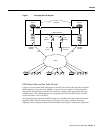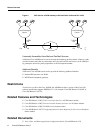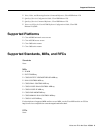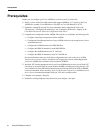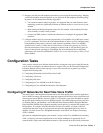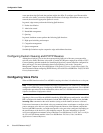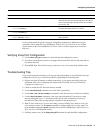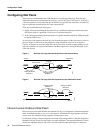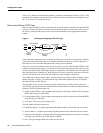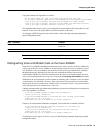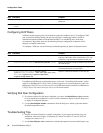
Configuration Tasks
8
Cisco IOS Release 12.0(7)T
same operations; the QoS tasks they perform might also differ. To configure your IP network for
real-time voice traffic, you need to consider the functions of both edge and backbone routers in your
network, then select the appropriate QoS tool or tools.
In general, edge routers perform the following QoS functions:
• Packet classification
• Admission control
• Bandwidth management
• Queuing
In general, backbone routers perform the following QoS functions:
• High-speed switching and transport
• Congestion management
• Queue management
Scalable QoS solutions require cooperative edge and backbone functions.
Configuring Custom Queuing and IP RTP Reserve
Although not required, you can use the custom queuing QoS tool to fine-tune your network for
real-time voice traffic. Real-time voice traffic is carried on UDP ports ranging from 16384 to 32767.
Custom Queuing and other methods for identifying high priority streams should be configured for
these port ranges. For more information about custom queuing, refer to the “Congestion
Management” chapter in the Cisco IOS Release 12.0 Quality of Service Configuration Guide. For
more information about configuring IP RTP Priority, refer to the Cisco IOS Release 12.0(5)T IP RTP
Priority feature module.
Configuring Voice Ports
When an ISDN interface on the Cisco AS5800 is carrying voice data, it is referred to as a voice port.
Note A voice port was created automatically when you installed the VFC in the Cisco AS5800 and
configured an ISDN PRI group. Configuring an ISDN PRI group is part of the basic Cisco AS5800
configuration procedure. For more information, refer to the Cisco AS5800 Universal Access Server
Software Installation Configuration Guide.
Signaling in Voice over IP for the AS5800 is handled by ISDN PRI group configuration. After ISDN
PRI is configured for both B and D channels for both ISDN PRI lines, you need to issue the isdn
incoming-voice command on the serial interface (acting as the D channel) to ensure a dial tone.
Under most circumstances, the default voice-port command values are adequate to configure voice
ports to transport voice data over your existing IP network. Because of the inherent complexities
involved with PBX networks, you might need specific voice-port values configured, depending on
the specifications of the devices in your telephony network. For more information on specific
voice-port configuration commands, refer to either the Cisco IOS Release 12.0(3)T Voice over IP for
the Cisco AS5300 feature module or the Cisco IOS Release 12.0 Voice, Video, and Home
Applications Command Reference.





